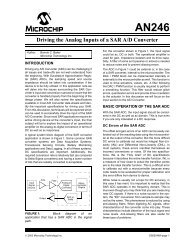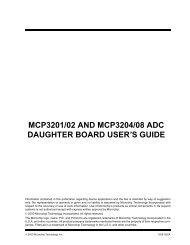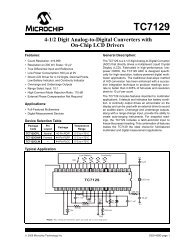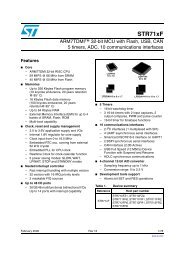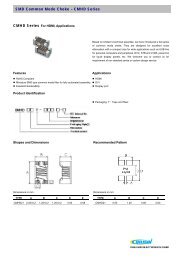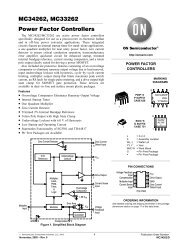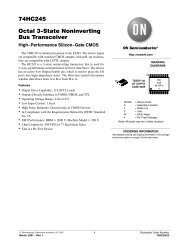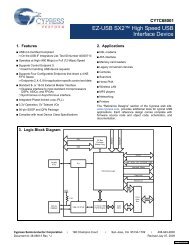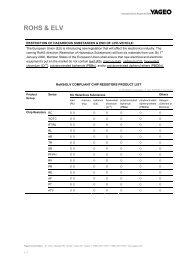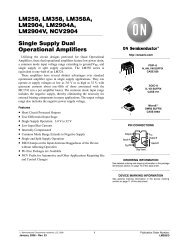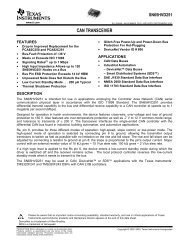Ultralow power ARM-based 32-bit MCU with 384 Kbytes Flash ... - Keil
Ultralow power ARM-based 32-bit MCU with 384 Kbytes Flash ... - Keil
Ultralow power ARM-based 32-bit MCU with 384 Kbytes Flash ... - Keil
- No tags were found...
Create successful ePaper yourself
Turn your PDF publications into a flip-book with our unique Google optimized e-Paper software.
STM<strong>32</strong>L162VD, STM<strong>32</strong>L162ZD, STM<strong>32</strong>L162QD, STM<strong>32</strong>L162RDElectrical characteristicsFigure 13.HSE oscillator circuit diagram 1. R EXT value depends on the crystal characteristics.Low-speed external clock generated from a crystal/ceramic resonatorThe low-speed external (LSE) clock can be supplied <strong>with</strong> a <strong>32</strong>.768 kHz crystal/ceramicresonator oscillator. All the information given in this paragraph are <strong>based</strong> on characterizationresults obtained <strong>with</strong> typical external components specified in Table 26. In the application,the resonator and the load capacitors have to be placed as close as possible to the oscillatorpins in order to minimize output distortion and startup stabilization time. Refer to the crystalresonator manufacturer for more details on the resonator characteristics (frequency,package, accuracy).Table 26. LSE oscillator characteristics (f LSE = <strong>32</strong>.768 kHz) (1)Symbol Parameter Conditions Min Typ Max Unitf LSELow speed external oscillatorfrequency<strong>32</strong>.768 kHzR F Feedback resistor 1.2 MΩC (2)Recommended load capacitanceversus equivalent serialresistance of the crystal (R S ) (3)1. Based on characterization, not tested in production.R S = 30 kΩ 8 pFI LSE LSE driving current V DD = 3.3 V, V IN = V SS 1.1 µAI DD (LSE)LSE oscillator currentconsumptionV DD = 1.8 V 450V DD = 3.0 V 600V DD = 3.6V 750g m Oscillator transconductance 3 µA/Vt (4)SU(LSE) Startup time V DD is stabilized 1 s2. Refer to the note and caution paragraphs below the table, and to the application note AN2867 “Oscillatordesign guide for ST microcontrollers”.3. The oscillator selection can be optimized in terms of supply current using an high quality resonator <strong>with</strong>small R S value for example MSIV-TIN<strong>32</strong>.768kHz. Refer to crystal manufacturer for more details;4. t SU(LSE) is the startup time measured from the moment it is enabled (by software) to a stabilized<strong>32</strong>.768 kHz oscillation is reached. This value is measured for a standard crystal resonator and it can varysignificantly <strong>with</strong> the crystal manufacturer.nADoc ID 022268 Rev 2 69/124




